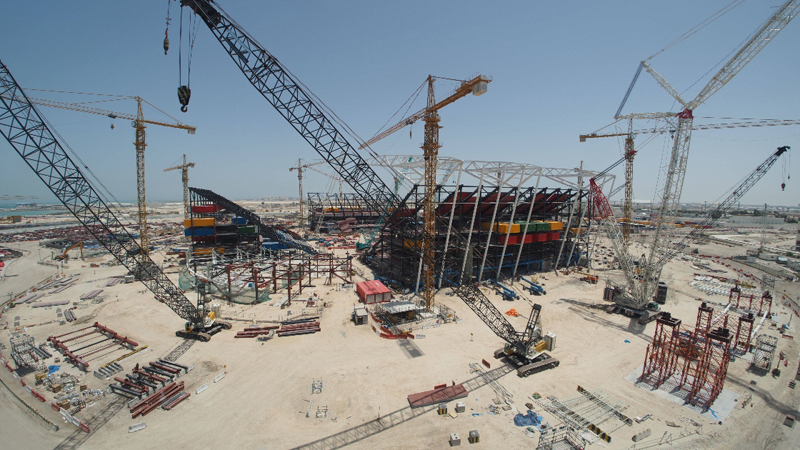
Ras Abu Aboud Stadium will be the first of its kind; a pioneering solution in stadium design and a blueprint for future sports events – but its sustainable legacy began long before construction even started.
The stadium is being made primarily from shipping containers and is set to host matches up to the quarter-finals stage during the FIFA World Cup Qatar 2022. After the tournament, the 40,000-capacity stadium will be completely dismantled, with its parts transformed into sporting facilities in Qatar and overseas.
And while the stadium’s sustainable legacy is guaranteed, what most people don’t know is what measures were taken to ensure its location – close to Doha Port and overlooking the spectacular West Bay skyline – became suitable to house the construction. The land where Ras Abou Aboud is being built had to be decontaminated after years of industrial use, meaning a legacy for the site has been delivered before the project has even been completed.
Significant work has been carried out by the Supreme Committee for Delivery & Legacy (SC) to remove the existing buildings, laboratories, workshops and fuel tanks. Some of the old buildings were kept – partly for their cultural and architectural value but also to ensure new facilities didn’t need to be created from scratch.

The SC’s Sustainability & Environment Senior Manager, Bodour Al Meer, said: “Due to the nature of construction at the time the buildings were constructed, many had asbestos within their structures. Asbestos removal specialists were employed, taking exceptional care during the demolition and site preparation phases. Over 65 tonnes of asbestos containing material was removed from the site and safely disposed.”
Al Meer continued: “Soil and groundwater contamination were also present in some locations. Water was run through a specific waste treatment process before it was used for dust suppression on-site or discharged into the sea, to adhere to Qatar’s strict environmental requirements.”
More than 80% of the materials from the demolished buildings were reused or recycled, including metals, electronics, wood and office/packaging waste. Almost 70,000 tonnes of concrete and asphalt were crushed, tested and stockpiled to use during the construction of the stadium.
The land was also home to trees and vegetation, some of which were more than 30 years old. More than 875 trees were inspected and tagged, and where possible, excavated and removed to the SC Tree & Turf Nursery, which provides the tree and turf for all Qatar 2022 venues.
So far, 923 containers have been delivered to the stadium site out of the 949 required for its construction. The fabrication of steel for the structure is 94% complete and the development of the steel structure is now 33% complete.
Mohammed Al Mulla, Acting Precinct Director, Ras Abu Aboud Stadium, said: “It’s an honour to work on such a sustainable project. Sustainability is at the core of everything we do for Qatar 2022 and Ras Abu Aboud exemplifies that commitment. The fact we’ve been able to decontaminate this former industrial site and turn it into a prime seafront location for future generations to enjoy is a great legacy for us.”




